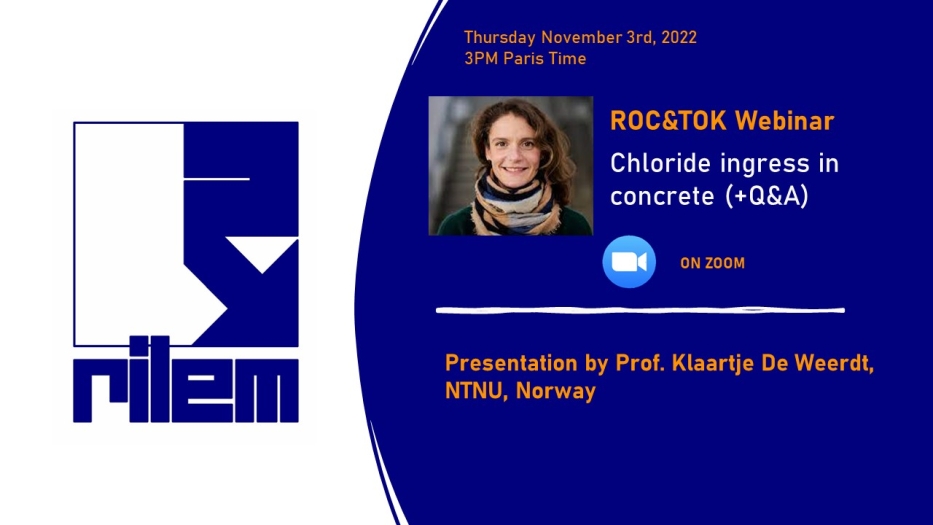Events calendar
Region : Europe

RILEM Webinar: Chloride ingress in concrete
We are pleased to announce that the next ROC&TOK webinar will take place on November 3rd, 2022 at 3PM CEST/Paris Time and will be one hour long (30-minute presentation + 30-minute interaction). The registration for this webinar is free.
Speaker: Prof. Klaartje De Weerdt, NTNU, Norway
Hosts: Prof. Karen Scrivener, EPFL, Switzerland and Dr Prannoy Suraneni, University of Miami, United States
Title: Chloride ingress in concrete
This ROC&TOK dives into chloride profiles in marine exposed concrete. Chloride profiles show the chloride content in concrete as a function of the ingress depth. Chloride profiles are a commonly used engineering tool for design and maintenance of reinforced concrete structures exposed to chloride loaded environments, where chloride induced reinforcement corrosion is the degradation mechanism limiting the service life of structures. They show how far the chlorides have penetrated the concrete cover and are commonly used to predict further ingress as a function of time in order to estimate for example the remaining service life of a structure.
In this talk, we start off by investigating long-term marine exposed concrete. The exposed concrete shows a typical elemental zonation at the exposed surface: carbonates at the surface, followed by a Mg-enriched zone, then a S-enriched zone and finally the Cl-zone. The observation of this zonation leads to the following question: “How do sulfur and magnesium in sea water affect the chloride ingress in concrete?” We try to answer this question using a simple thermodynamic model and laboratory set-up.
The field samples also showed that at the chloride content at the exposed surface is rather low. This gives rise to the following question: “How can we have low chloride contents at the surface when diffusion is one of the main chloride ingress mechanisms?” In order to try to understand this, we first put up a simple model showing the importance of chloride binding in chloride profiles. Then we demonstrate how chloride binding is dependent on the pH and thereby the degree of leaching of the cement paste. Finally, we put up a laboratory experiment demonstrating the importance of leaching on chloride ingress.
The take home message is that leaching has a major impact on chloride profiles, and that has to be accounted for in mechanistic and engineering models used for service life prediction of reinforced concrete structures exposed to marine environment.
Register here for FREE!
No comment
Log in to post comment. Log in.





